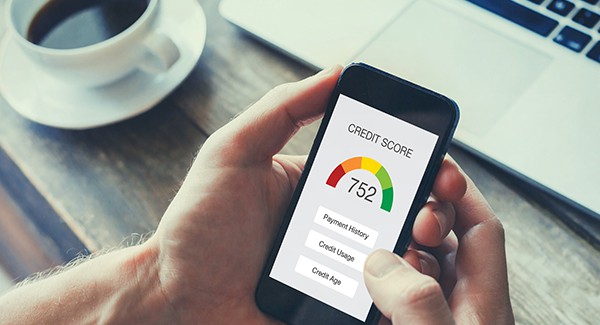
Last Updated on September 6, 2022
It’s no fun when you make the realization that credit cards (and how you treat them) will come back to haunt you. Maybe not today or tomorrow, but when you go to buy a car or even a house, you can bet your less-than-positive credit habits will show up in the form of increased interest and more conditions.
Have a sneaking feeling you might need to help your credit score move in the positive direction? Here are five ways to get the ball rolling.
Understand credit score basics
When you’re buying a big-ticket item like a home, and assuming you’re going to need to finance at least part of this purchase, one of the first things lenders will do is pull your credit report.
The credit report used for mortgage loans is a combined report with information from three credit bureaus: Equifax, Experian and TransUnion, and helps to give lenders a clear picture of how responsible you are with handling borrowed money. Each bureau provides slightly different information that is then merged into one report, and your credit score is the middle score (not the average) from the three reporting credit bureaus. Your score will be a number between 300 and 850, with most scores ranging from 650-800 – the higher the better.
If you’re new to this whole credit thing, you likely don’t have a credit score just yet. Generally, you’ll need to have one account open for at least six months or longer for credit bureaus to be able to calculate a score for you.
Keep an eye on your credit
If you haven’t checked your credit report in a while or ever, it’s a good idea to get the lowdown on your stats. Pull a detailed report annually— free of charge— from annualcreditreport.com to get a clear understanding of exactly what you’re working with. Once you’re brave enough to take a peek at your detailed report, carefully examine the report to make sure nothing stands out to you as fraudulent. If you don’t recognize personal information, payments that have been marked as late, or credit that’s been opened in your name, it’s time to get to work and clean up your credit.
Pay your bills … on time
The quickest way to sink your credit score is to act like due dates are merely suggestions. Just one late payment over 30 days will stay on your credit report for seven years. Ouch. The good news here is that mortgage lenders can pick up on your credit patterns: A few late payments are not likely to derail your chances of getting a mortgage, but several late payments in your recent past? That might not bode so well. The moral of the story here is to pay your bills on time, every time.
Reduce your credit borrowed
Practice the snowball method: Throw all of your extra cash towards the card with the lowest balance while still paying the minimum balance on your other cards. Once the low-balance card is paid off, start in on your second-lowest card balance. Because credit card utilization is an important factor in calculating your credit score, you’ll want to keep your credit card balances under 20 percent once you’ve completed the snowball method.
Don’t throw away history
You might think you’re “cleaning up” your credit by getting rid of cards that have taken up space on your report since Boy Meets World was the highlight of your Friday night. But you’re oh-so wrong. You might be surprised to find out that your length of credit history, coupled with the amount of credit you’re currently on the hook for, make up a whopping 30 percent of how your score is calculated. On the flip side, if you don’t have a lengthy history with the shiny plastic, don’t think you can create it overnight and open up an account with every retailer you do business with— this signals red flags to lenders.



